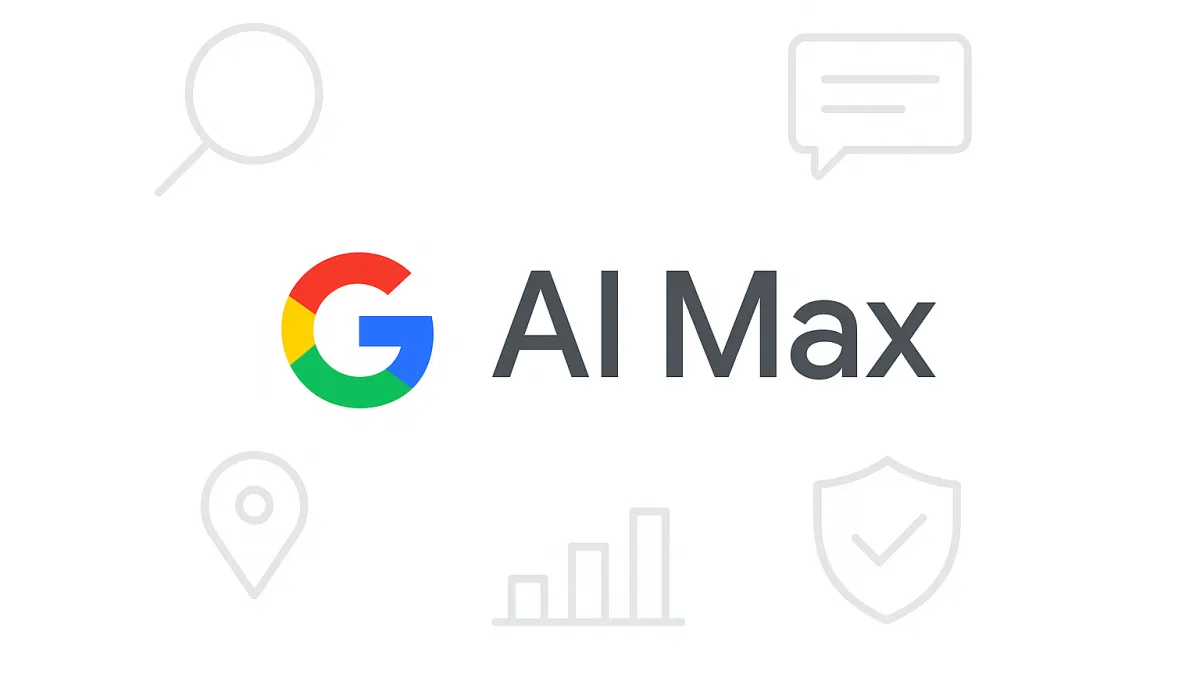
FAQ: The New Search Triad – SEO, AEO & GEO
Q: What does the new Search Triad SEO, AEO, and GEO mean?
A: The new Search Triad refers to the combination of SEO (Search Engine Optimization), AEO (Answer Engine Optimization), and GEO (Generative Engine Optimization). It is an expanded approach to search engine optimization that goes beyond traditional methods to succeed in the modern search landscape.
Q: Why is it necessary to rethink the search strategy and go beyond classic SEO?
A: The search landscape is constantly changing. It is necessary to rethink the search strategy because:
- The click rates for classic organic search results (SEO) tend to decrease.
- So-called "zero-click searches," where users find their answer directly on the search results page, are increasing.
AI-powered search results, such as those presented by chatbots or in the Search Generative Experience (SGE), prefer to quote content from sources perceived as authorities. Those who rely solely on traditional SEO measures today risk losing visibility and relevance.
Q: What exactly is SEO (Search Engine Optimization)?
A: SEO, or Search Engine Optimization, primarily aims to generate clicks from organic (unpaid) search results. The primary user touchpoint here is the search results page (SERP), where users scroll and click.
Q: What does AEO (Answer Engine Optimization) mean?
A: AEO, or Answer Engine Optimization, aims to provide users with immediate and direct answers to their questions. These answers often appear prominently as featured snippets on the search results page or are output by voice assistants (such as Siri, Alexa, or Google Assistant).
Q: And what does GEO (Generative Engine Optimization) mean?
A: GEO, or Generative Engine Optimization, focuses on being a trustworthy and citable source for AI-based chatbots and generative search experiences. Examples of such user touchpoints are Google's Search Generative Experience (SGE), ChatGPT, Perplexity, and similar AI applications.
Q: How do the main goals and user touchpoints of SEO, AEO, and GEO differ in detail?
A: The three disciplines have different focuses:
- SEO:
- Main goal: Generate a click in the organic search result.
- User touchpoint: The classic search results page (SERP) where users scroll and click.
- AEO:
- Main goal: Provide an immediate, direct answer to a user's question.
- User touchpoint: Voice assistants, featured snippets in search results.
- GEO:
- Main goal: Serve as a reliable source of information for AI chats and generative answers.
- User touchpoint: SGE (Search Generative Experience), ChatGPT, Perplexity, and other AI-supported dialogue systems.
Q: Which aspects of the User Experience (UX) are particularly important for SEO, AEO, and GEO respectively?
A: Optimizing the user experience (UX) plays a role in all three areas, but with different focuses:
- SEO: Important UX levers here include fast page loading speed, a mobile-first design (optimal display on mobile devices), and ensuring accessibility (accessibility for all users, including those with disabilities).
- AEO: For optimization on answer engines, structured data in the website's source code, clearly defined FAQ blocks on the website, and the use of short, concise sentences are crucial.
- GEO: To be relevant for generative AI systems, you need deeper context on topics, modular content sections (which can be easily analyzed and compiled by AI), and ideally, the use of open licenses that allow the continued use of content.
Q: What should a content strategy that considers SEO, AEO, and GEO look like (keyword "Content Pyramid")?
A: The "Content Pyramid" proposes a hierarchical content strategy tailored to different goals:
- SEO (Base): Creation of evergreen guides - these are comprehensive, timeless guides and articles on core topics that remain relevant in the long term.
- AEO (Middle): Development of "Snackable FAQs" – these are short, easily digestible question-and-answer pairs that provide quick answers to specific user questions.
- GEO (Top): Publication of deep dives & studies – this involves in-depth analyses, detailed studies, and research reports that demonstrate well-founded expertise and authority.
Q: What technical aspects of information architecture are relevant for SEO, AEO, and GEO?
A: A well-thought-out information architecture is important for all three areas:
- SEO: A clean sitemap.xml (a file that helps search engines find and index all pages of a website) and a correctly configured robots.txt (a file that gives search engine crawlers instructions on which areas of a website can or should be crawled) are fundamental.
- AEO: Implementing schema markup for FAQPage and HowTo (special code designations that help search engines better understand and display the content of FAQs and guides) is very important here.
- GEO: For optimization on generative systems, so-called embeddings (numerical vector representations of content that can be understood by AI systems) and vector databases (special databases for storing and quickly querying these embeddings) are becoming increasingly important.
Q: How can the success of measures in SEO, AEO, and GEO be measured?
A: The success measurement varies by discipline:
- SEO: Classic metrics here are clicks, impressions (how often a search result is displayed), and ranking (the position of the website in search results for certain keywords).
- AEO: Success is often measured by zero-click impressions (displays in featured snippets or direct answers that do not generate clicks on the website as the answer is displayed directly) and the snippet share (how often your page appears in a featured snippet or direct answer).
- GEO: Measurability in this area is still developing, but important indicators are citations in AI output (i.e., how often your content is mentioned as a source in the answers of AI chatbots or SGE) and general brand mentions (mentions of your brand on the web).
Q: What are three quick actions (Quick Wins) you can implement starting today to optimize your content for SEO, AEO, and GEO?
A: Here are three concrete tips you can start with:
- Create FAQ sections for top topics: Create dedicated sections with frequently asked questions and concise answers on your most important pages. This is particularly valuable for AEO.
- Modularize long-form articles: Structure longer articles by clear and deeper use of headings (H1, H2, H3, H4, etc.). A modular structure helps AI systems better understand and process the content, which benefits GEO.
- Expand author profiles with E-E-A-T signals: Strengthen the profiles of your authors by clearly highlighting their experience, expertise, authority, and trustworthiness (E-E-A-T). This is important for all areas, especially to be classified as a credible source by AI systems.
Q: What does the term "E-E-A-T" mean?
A: E-E-A-T is an acronym used by Google that stands for Experience, Expertise, Authoritativeness, and Trustworthiness. These factors are crucial in how Google evaluates the quality and credibility of web content and their creators. Highlighting these signals, like through detailed author profiles, is an important aspect of modern content optimization and is mentioned in the PDF in connection with the Quick Wins.
Q: What are "zero-click searches"?
A: "Zero-click searches" are searches where the user gets their answer directly on the search results page—through a featured snippet, a knowledge box, or a direct answer—and therefore does not need to click on any of the organic links to find the information they are looking for. The increase in these types of searches is one reason why a sole focus on traditional SEO is no longer sufficient.
Q: What are "structured data" in the context of AEO?
A: Structured data are specific markups in a website's source code that help search engines better understand and classify the content and meaning of information on a page. They often use a vocabulary like Schema.org. For AEO, structured data are particularly important to prepare content for featured snippets and voice assistant responses, such as through FAQPage and HowTo schema.
Q: What does "SGE" mean in the context of GEO?
A: SGE stands for "Search Generative Experience." This refers to a new type of search experience where generative artificial intelligence (AI) is integrated directly into the search results page. Instead of just displaying a list of links, the search engine can create a summary, AI-generated response to the search query, often based on information from multiple web sources. GEO aims for the own contents to be considered and cited as authoritative sources in these SGE responses.


